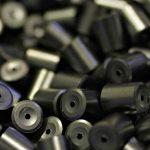If a yellow bruise pops up on your arm or leg, do you need to be alarmed? Not at all. Bruises transition through several colors during the healing process, with yellow typically occurring toward the later stages. It’s a normal sign that your body is repairing the injury. Fortunately, while bruises may initially be painful, they’re usually not serious.
You can get a bruise from any type of bump or collision. Any fall, accident or sports injury that’s forceful enough can rupture blood vessels under your skin. If you bump into a blunt object, it’s unlikely to break the skin, so blood pools underneath, causing a bruise.
In more severe injury, a bone bruise can result, which is typically detected using magnetic resonance imaging (MRI). It’s also possible to bruise a muscle, which often occurs due to sports-related injuries. The most common bruises are subcutaneous, which are the type that occur when you accidentally bump into a hard surface.1
Normal Color Changes in a Bruise
When a bruise, medically known as ecchymosis, first appears, it will be red or pink in color due to the blood trapped beneath the skin. As the blood is broken down and absorbed by the body, the bruise will turn blue or purple, then progress to green or yellow.2
The greenish color comes from biliverdin, a product of blood catabolism that has a green hue. Biliverdin is converted into bilirubin, which is yellow, causing the bruise to turn golden. As bilirubin is eliminated, the bruise may take on a brownish coloring before eventually disappearing.3
The entire process, from first appearance to full healing, can take days, weeks or even months. According to the National Institutes of Health:4
“When you first get a bruise, the newly trapped blood makes it look pink or red. Over the next few weeks, the body naturally breaks down the blood and absorbs it. So as the bruise fades, it changes colors. This is part of the normal healing process.”
The severity of the bruise — as well as your likelihood of bruising — depends on a number of factors. A more serious bump will typically lead to a bigger, more severe bruise, but it will appear differently in each individual.
Factors That Increase Your Risk of Bruising
Genetics likely play a role in how easily you bruise,5 as does age. People 65 years and older are at increased risk of bruising,6 in part because skin tends to get thinner with advancing age, which means it takes less force to cause injury. The protective fatty layer also diminishes with age, meaning you have less cushioning against bumps and falls.
If you engage in heavy weight lifting, the straining required can lead to burst blood vessels and related bruising. Other factors that may make you prone to bruising include:7
Certain chronic diseases, such as cancer or liver disease
A family history of easy bruising
Use of medications such as aspirin, nonsteroidal anti-inflammatory drugs (NSAIDs) or blood thinners. While certain drugs, such as antiplatelet agents, reduce your blood’s clotting ability, increasing bruising risk, others — like prednisone8 and oral contraceptives — weaken your blood vessels, leading to bruising
Bleeding disorders such as hemophilia and von Willebrand disease. Conditions like hemophilia and leukemia can cause unexplained bruising, often because your blood fails to clot properly
Low blood platelet count (thrombocytopenia)
Certain nutrient deficiencies, including vitamins C and K
Purpuric dermatosis, a vascular condition that occurs more often in older adults, causes thousands of tiny bruises, often on your shins, which may appear similar to cayenne pepper.9 The bruises are the result of blood leaking out of small capillaries.
Petechiae is a similar condition involving tiny, pinpoint reddish dots that appear on your skin due to bleeding. Though the dots may appear similar to a rash, they’re due to broken capillaries, or small blood vessels, under the skin.10
Certain conditions may also be confused for bruising. People with diabetes, for instance, may develop dark skin discolorations, often in areas where skin touches other skin frequently. These discolorations appear similar to bruises, but they are actually due to underlying insulin resistance.
If You Bruise Easily, Check Your Diet
There are often dietary factors involved with frequent or easy bruising. Specifically, bioflavonoids, found in berries, leafy greens, garlic and onions, are essential for maintaining strong, flexible capillaries that resist bruising.
If you consume mostly whole foods, including organic vegetables and fruits, you’ll naturally get plenty of bioflavonoids. In a study of adults with senile purpura, taking a citrus bioflavonoid supplement for six weeks reduced purpura lesions by 50%.11 You can further bolster your intake with the following supplements:
Rutin — This bioflavonoid is often recommended for varicose veins, hemorrhoids and bruising. In a study of people with progressive pigmented purpura, the skin lesions were completely cleared after four weeks of treatment with a rutin (50 milligrams (mg) twice a day) and vitamin C supplement.12
Hesperidin — This bioflavonoid, from citrus peels, also helps strengthen capillaries. Menopausal women who used hesperidin and vitamin C had reduced bruising in one study.13
Vitamin C — Increasing vitamin C intake among older adults with low levels led to reductions in purpura.14 Easy bruising may also be a sign of vitamin C deficiency.15 University of Michigan Health recommends, “Reduce your tendency to bruise by taking a daily combination of at least 400 mg of vitamin C and 400 mg of flavonoids, such as hesperidin or rutin.”16
When Should You Worry About a Bruise?
If you have severe and frequent unexplained bruising, it’s a good idea to see a physician to rule out blood disorders, especially if it seems to come on suddenly. You should also talk to a doctor if bruises appear soon after you start taking a medication, a bruise doesn’t appear to be getting better or fading, or if you develop a very large bruise accompanied with pain after an injury — this could indicate a more severe injury, like a broken bone.17
Bruising accompanied by signs of infection, such as red streaks or fever, or a bruise that recurs in the same spot, should also be looked at by a health care professional. “If bruising becomes really common, if it’s not provoked, or if there’s a change in your bruising patterns, get it checked out,” Dr. José López, with Bloodworks Northwest Research Institute, told the NIH.18
Be aware that high blood pressure can also trigger bruising, as the high pressure of blood in the vessels may cause them to break down, allowing blood to seep into tissues and causing discoloration similar to a bruise.19
Natural Options for Faster Bruise Healing
You’ll want to support bruise healing from the inside out, including by fortifying your diet with bioflavonoid-rich vegetables and fruits. I also recommend that everyone keep some high-quality lumbrokinase in your emergency kit. When I had a significant bruise from a weight training injury, I took a high dose of lumbrokinase for a week and it cleared right up.
Extracted from earthworms, lumbrokinase is a highly effective antithrombotic agent that reduces blood viscosity and platelet aggregation,20 while also degrading fibrin, which is a key factor in clot formation. Other natural remedies to help bruises heal faster include:
Arnica oil — Arnica flowers and roots have been used for hundreds of years as an herbal medicine. It has anti-inflammatory properties and also stimulates the flow of white blood cells, which process congested blood to help disperse trapped fluid from your joints, muscles and bruised tissue.
Arnica oil is recommended for topical application only and in diluted form, as pure arnica essential oil is very potent and may cause severe side effects. In a study of healthy adults, topical application of 20% arnica ointment reduced bruising more effectively than a petrolatum placebo or a 1% vitamin K/0.3% retinol formulation.21
Cabbage leaves — For facial bruises, take the large outer leaves of white cabbage, break the ridges of the leaves and dip them in very hot water. Then apply to the bruise, but make sure they’re not scalding hot as you put them on your face.
Cold compress — Applying a cold compress to the bruised area can help reduce swelling and pain. The sooner you apply the compress after the injury, the better.
Aloe vera — The fresh gel that comes from the aloe vera plant can help speed up healing from wounds and skin irritations.
Calendula — To make a salve, boil 1 ounce of dried calendula flowers or leaves (or one-fourth teaspoon of fresh juice from the herb) with 1 ounce of lard. Once the mixture has cooled, apply it to the bruise. This mixture is also good for sprains, pulled muscles, sores and boils.
Fenugreek — To make a poultice, put one-half ounce of crushed fenugreek seeds in a small cloth bag and boil it in water for a few minutes. Remove the bag and apply the “tea water” to the area. Make it as hot as you can stand it (but make sure it’s not scalding your skin).
Garden thyme — Put the green plant parts in water and boil them for three to four minutes. Cover the pot and leave it for another two to three minutes. Strain the mixture and add the decoction to your bath water. Soak in it as you would normally.
Onion — Apply it raw, directly to the bruise.
St. John’s Wort — Put 10 to 15 drops of St. John’s Wort oil in water and apply the mixture to the area.
Apple cider vinegar — Apply a hot or cold poultice of apple cider vinegar to your bruises.
Vitamin K — Topical vitamin K may help to reduce bruising.






